Echo and reverb are two very distinct yet interconnected elements in the world of music production.
They have the power to transform a flat, lifeless track into an epic, immersive experience 一 defining the spatial and atmospheric qualities of the sound.
As a music producer, it’s crucial to understand the differences between echo and reverb to shape the acoustic environment of your tracks effectively.
This knowledge allows you to manipulate sound in a way that enhances the emotional impact and overall quality of your music.
In today’s article, we’ll be breaking down:
- Echo vs reverb: the essential differences ✓
- The science behind sound waves ✓
- Echo: more than just a repeat ✓
- The essence of room sound in reverb ✓
- Mixing techniques for echo and reverb ✓
- Mastering the balance between echo and reverb ✓
- Creative use of sound reflections ✓
- Unique soundscapes with reverb and echo ✓
- Room acoustics and their impact ✓
- Hardware and software tools ✓
- Much more about echo vs reverb ✓
By the end, you’ll have a thorough understanding of echo and reverb so you can utilize these sound effects with precision and creativity.
As well as create soundscapes that resonate with your vision and enhance the listening experience of your audience like a true professional.
Whether you’re mixing a haunting ballad or an upbeat EDM track, mastering the use of reverb and echo will be a key part of your production toolkit.
Until next time…
Table of Contents
- Echo vs Reverb: Breaking it Down
- The Science Behind Sound Waves in Echo and Reverb
- Echo in Depth: More Than Just a Repeat
- The Reverb Effect: The Essence of Room Sound
- Techniques in Mixing Echo Effects with Reverb
- Balancing Echo and Reverb in the Mastering Process
- Creative Use of Short Sound Reflections & Longer Sound Reflections
- Room Acoustics & Their Impact on Echo and Reverb
- Echo vs Reverb: Final Thoughts
Echo vs Reverb: Breaking it Down
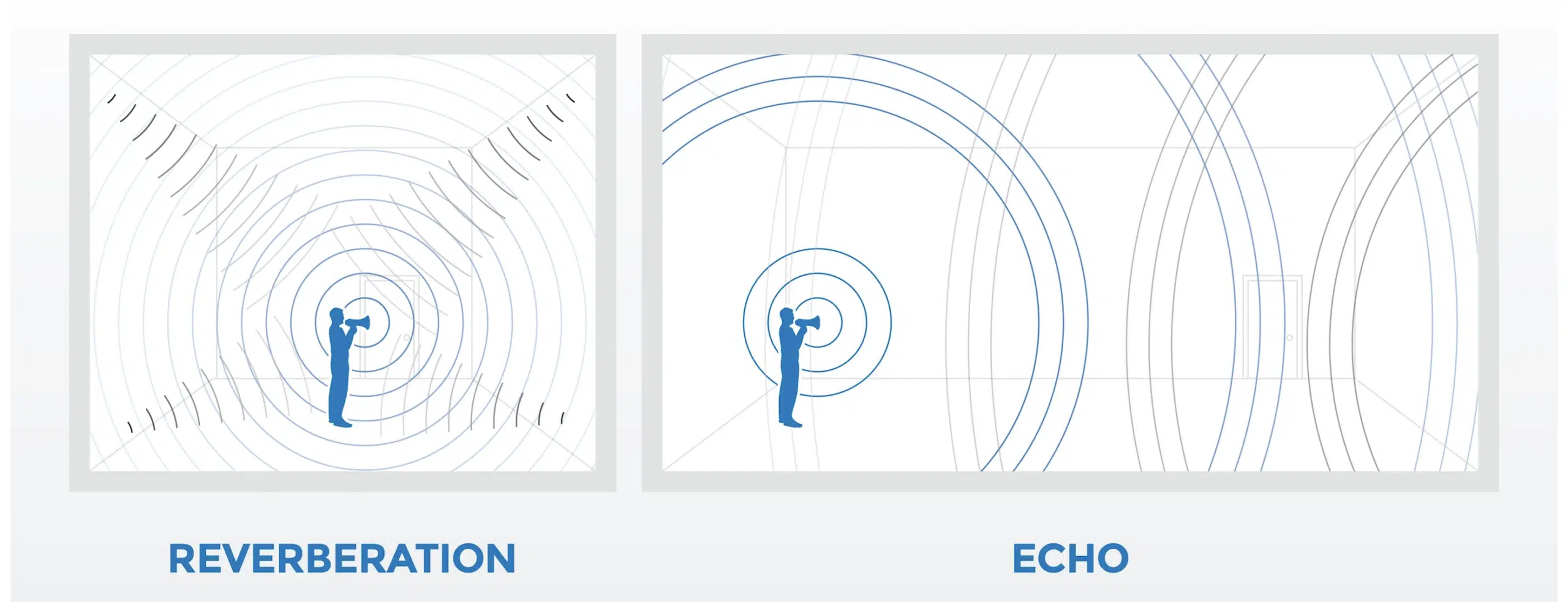
The distinction between echo vs reverb is fundamental for any producer or sound mixer who wants to sound professional and captivating.
Echo is a distinct repetition of sound after a delay, giving a sense of space and time.
When you hear echoes, it’s the sound waves bouncing off distant surfaces and returning delayed but recognizable.
Reverb, on the other hand, is all about creating an atmosphere.
It’s not just one reflection but a rapid series of sound reflections 一 short sound reflections that fill the space and create the aura of a room or environment.
Whether it’s the natural reverb of a large hall or the digitally created reverb in a small studio room, this audio effect is key for making all recordings sound unified.
Imagine clapping your hands in a cathedral and listening to the swell of sound that follows… that’s reverb in its most majestic form.
Understanding echo vs reverb is key to mastering the art of digital music production.
While echo can create a sense of movement or narrative in a song, reverb unifies the final sounds 一 making separate elements sound like they’re in the same space.
Both reverb and echoes are vital tools for shaping the listener’s experience, whether it’s making a voice sound ethereal or a guitar riff more punchy and present.
The Science Behind Sound Waves in Echo and Reverb
The key to differentiating echo from reverb lies in the behavior of sound waves. Let’s dive into the science of how these sound waves operate differently in echo and reverb effects.
-
How Sound Waves Work in Echo Effects
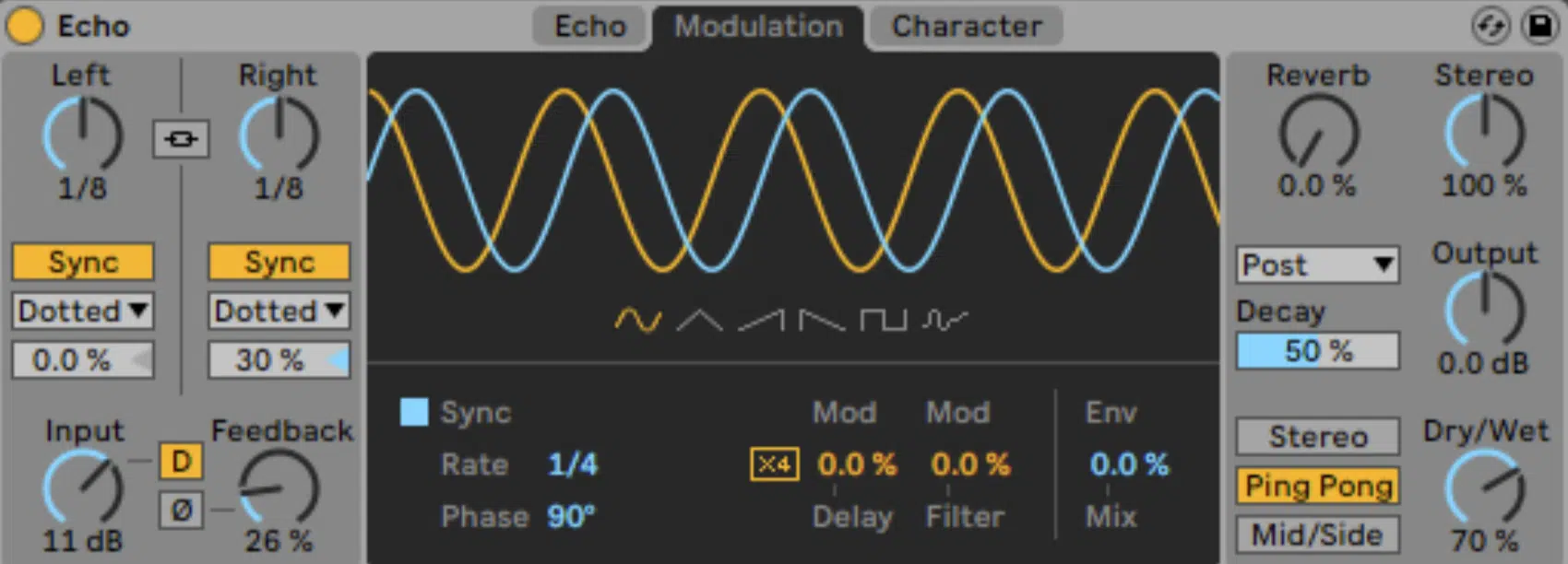
In echo effects, sound waves emit from a source, travel until they hit a surface, and then bounce back 一 this sound bouncing creates the echo effect.
A great example is when sound waves hit hard walls in a large, empty room, causing a distinct, delayed repetition known as an echo.
The character of the echo depends on several factors:
- The distance the sound waves travel
- The nature of the reflecting surface
- The original sound’s properties
For instance, in a small studio room, hard surfaces like walls and floors create tighter echoes, whereas larger spaces might produce a longer echo.
-
The Dynamics of Sound Waves in Reverb Sound
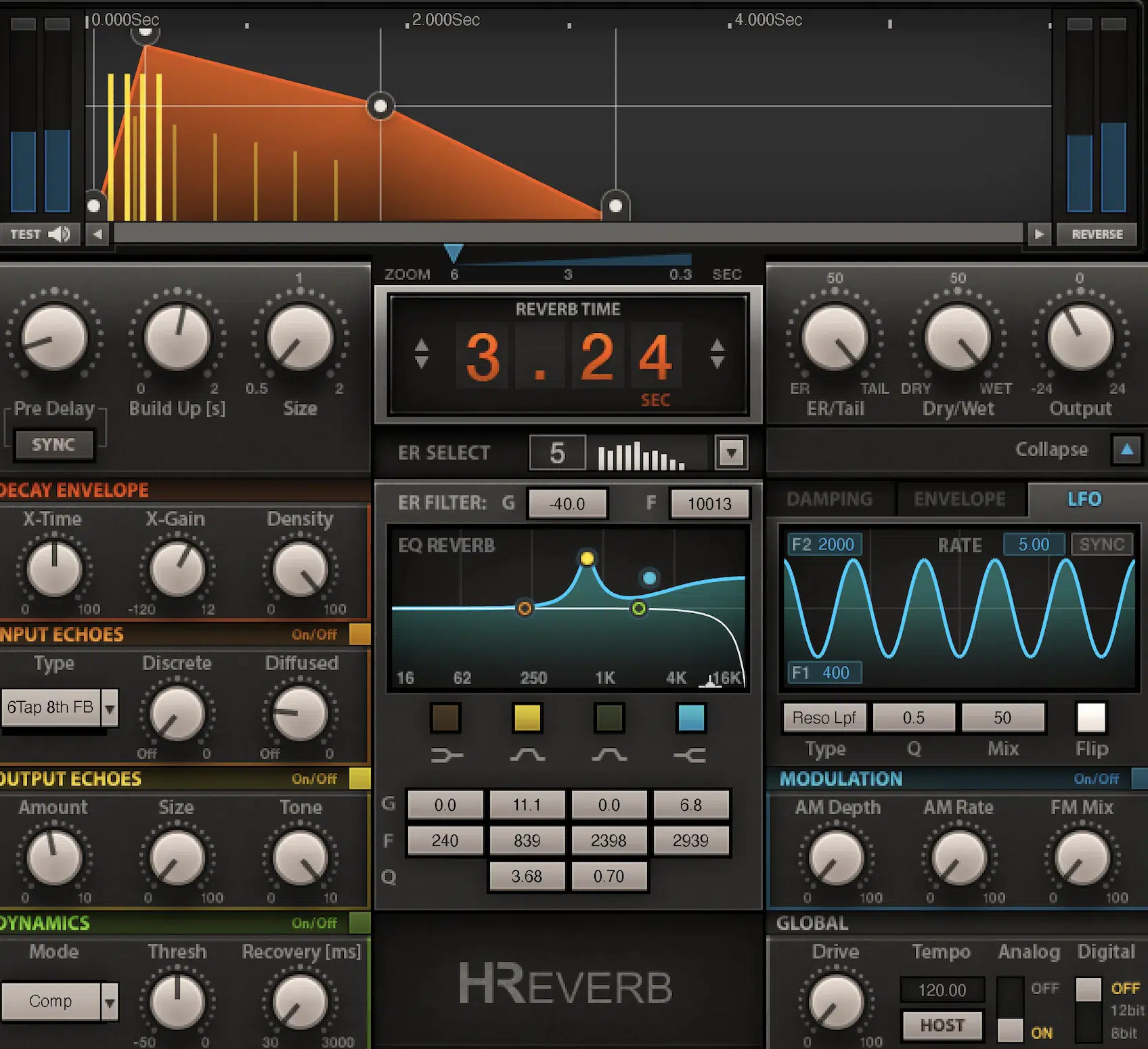
Unlike echo, reverb occurs when sound waves bounce off multiple surfaces, creating numerous, smaller reflections that reach the listener’s ear simultaneously.
This results in a rich, continuous sound that ‘fills’ the space.
Remember, the reverb effect is not about distinct repetitions but about the density and texture of sound reflections.
The type of room plays a significant role in reverb:
- A room with hard walls and floors 一 Will reflect sound more efficiently, leading to a brighter/more noticeable reverb.
- A room with soft furnishings and acoustical foam 一 Might absorb more sound, reducing the reverb effect.
This is why room acoustics are pivotal in recording music, especially if you’re aiming for the most pristine sound possible.
When it comes to reverb vs echo, it’s a delicate dance that, once you learn, will enhance your sound and help you discover mind-blowing effects.
Echo in Depth: More Than Just a Repeat
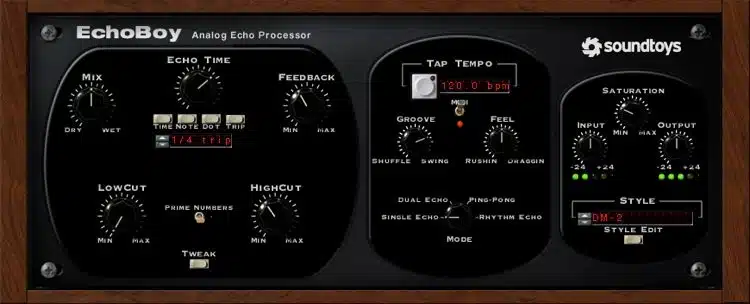
Echo can be much more than a simple repeat of the original sound.
In music production and sound design, using echo effects creatively can add depth and dimension to a track.
For example, delayed pedals can be used to create a rhythmic echo that complements the tempo of a song.
Echo also plays a crucial role in creating a sense of location sound mixed to perfection.
In soundtracks for film or television, when people shout in large, empty spaces, the echo helps convey the sense of vastness and emptiness.
Plus, echo can be used to create a call-and-response effect in songs 一 adding an engaging element to your songs.
By adjusting the delay time, feedback, and wet/dry mix on an echo effect, you can create a vast range of soundscapes, from subtle to dramatic.
The Reverb Effect: The Essence of Room Sound
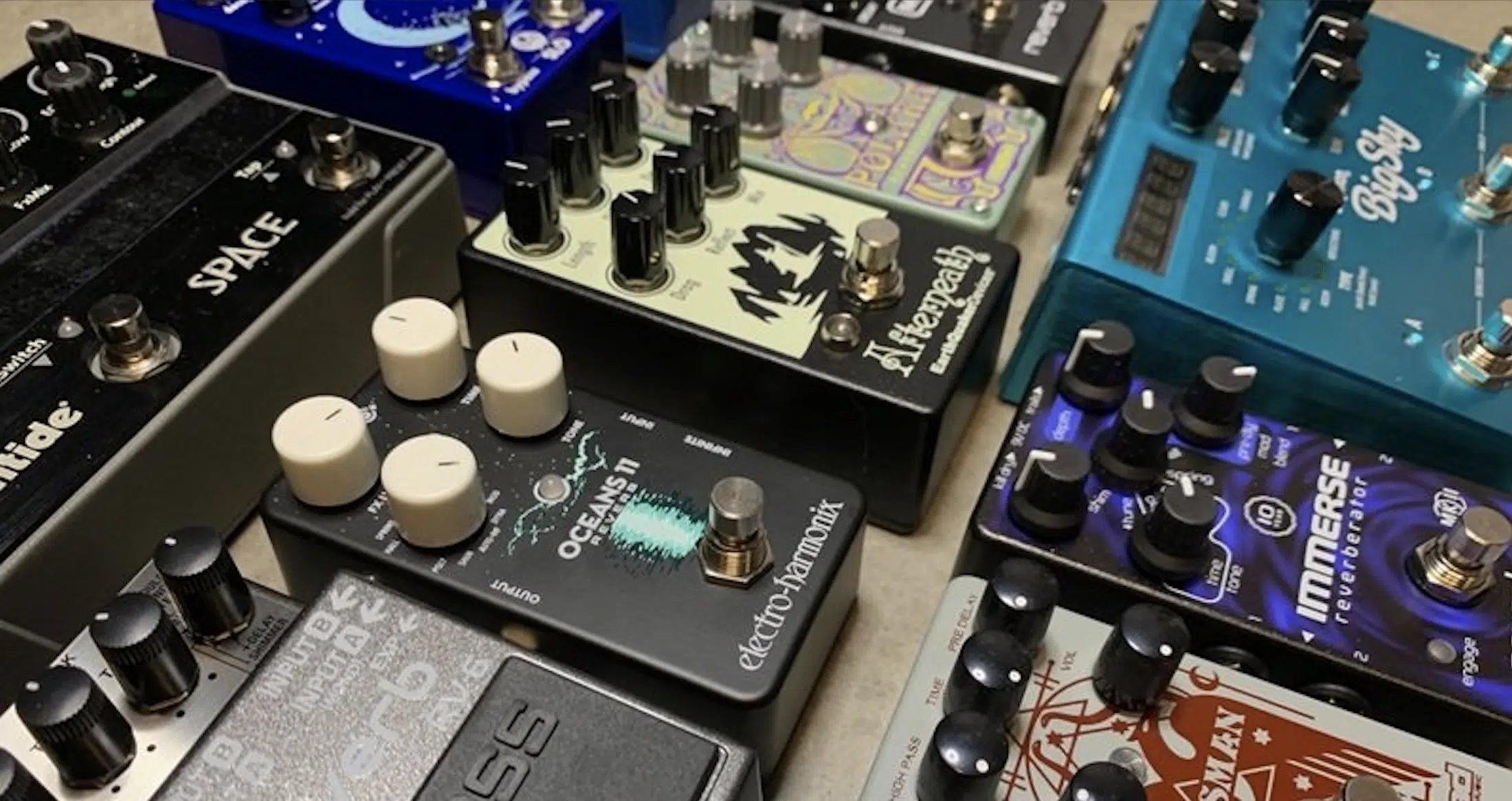
Reverb is all about creating space and depth in a recording.
It simulates the way sound waves fill a room 一 giving listeners the illusion of being in a specific space.
For example:
- A cathedral reverb produces a grand, expansive sound.
- A small room setting offers a more intimate feel.
The reverb effect is essential when you unify final sounds of a recording; helping disparate elements in a mix audio sound like they belong to the same space.
This is particularly important in digital music production, where sounds are often created in very different spaces or even entirely in the box.
Reverb can also be used to highlight certain elements of a track.
By adjusting the decay time and the level of the reverb, producers can make certain instruments or vocals stand out or blend more into the background.
It helps with the mixing and mastering process (which we’ll break down further along).
Techniques in Mixing Echo Effects with Reverb
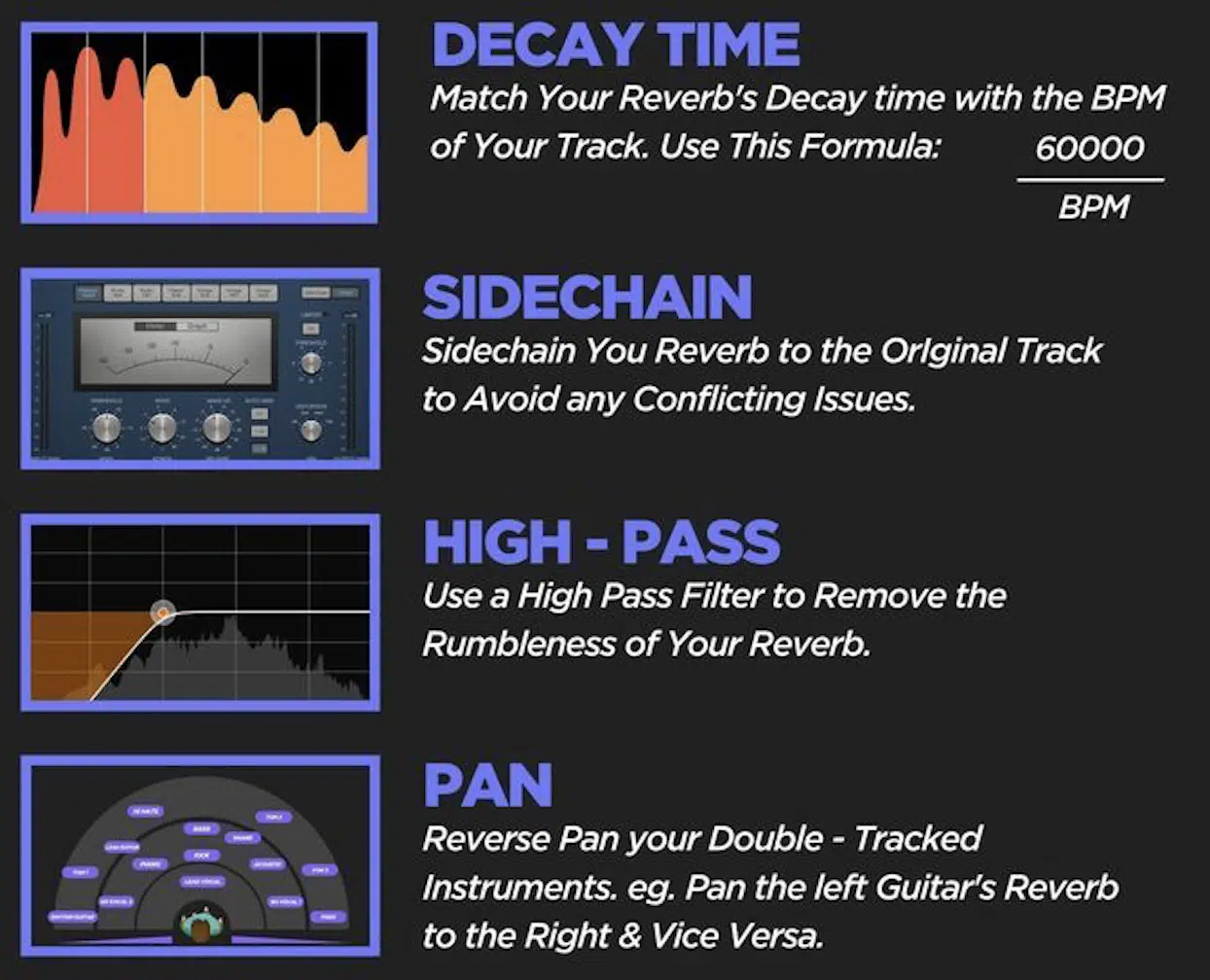
Mixing echo and reverb requires a delicate balance.
A common technique is to use echo to highlight specific elements like vocals or lead instruments 一 creating a sense of depth.
By setting the echo to correspond with the song’s rhythm, it adds a dynamic layer without overwhelming the original sound.
Meanwhile, reverb can be applied more broadly to give your entire mix a cohesive feel, as if every sound is originating from the same space.
Another effective approach is to use pre-delay settings on reverb to separate the original sound from the reverb tail, creating more clarity.
This production technique (coupled with a carefully adjusted echo) can lead to a mix where elements stand out yet remain part of a unified whole.
For instance, in electronic music, a snappy echo on a synth line, combined with a lush, roomy reverb on the background pads, creates a captivating, layered sound.
Balancing Echo and Reverb in the Mastering Process
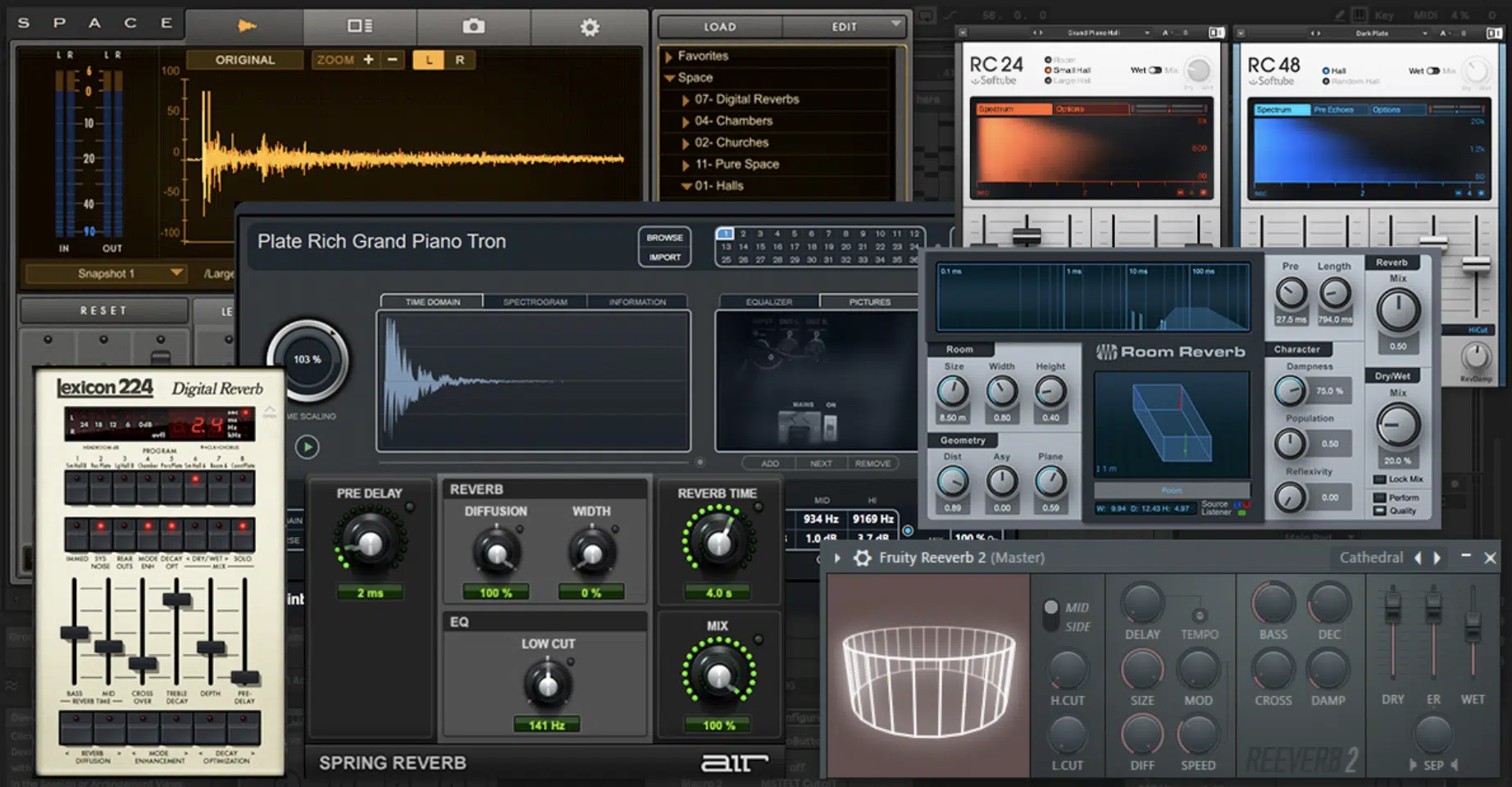
The mastering process is where the balance between reverb and echo becomes critical.
Here, the goal is to ensure that both effects are present but not overwhelming.
This involves careful listening and adjusting levels to ensure that the echo and reverb effects don’t muddy the mix or overshadow the original sound.
One technique is to use automated dialogue replacement (ADR) to fine-tune the presence of echo in vocal tracks 一 ensuring they blend seamlessly with the reverb.
NOTE: This is particularly important in mastered songs for television or film, where clarity of speech is paramount.
It’s also essential to consider the listener’s perspective.
The final sounds should feel natural and immersive, whether heard through headphones or speakers.
This means paying attention to how both the reverb and echo translate across different playback systems.
-
Pro Tip: Echo and Reverb in Rock Songs & Electronic Music

In rock music, you can hear reverb and echo are still essential for creating that iconic, larger-than-life sound.
Many rock songs use echo to give lead guitar parts a lingering, haunting quality.
The delay pedals, often a staple in a guitarist’s toolkit, are used to create these echoing effects.
Meanwhile, a reverb pedal adds depth to the drums and vocals, unifying the track with a roomy, live sound, reminiscent of classic rock concerts.
In electronic music, these audio effects are used to sculpt a unique sonic landscape.
Echo can turn a simple electronic beat into a complex, rhythmically interesting pattern.
Reverb, on the other hand, is often applied to synths and pads 一 giving them a spacious, ethereal quality.
This combination is pivotal in genres like ambient or trance, where the mood and atmosphere are as important as the melody.
Creative Use of Short Sound Reflections & Longer Sound Reflections
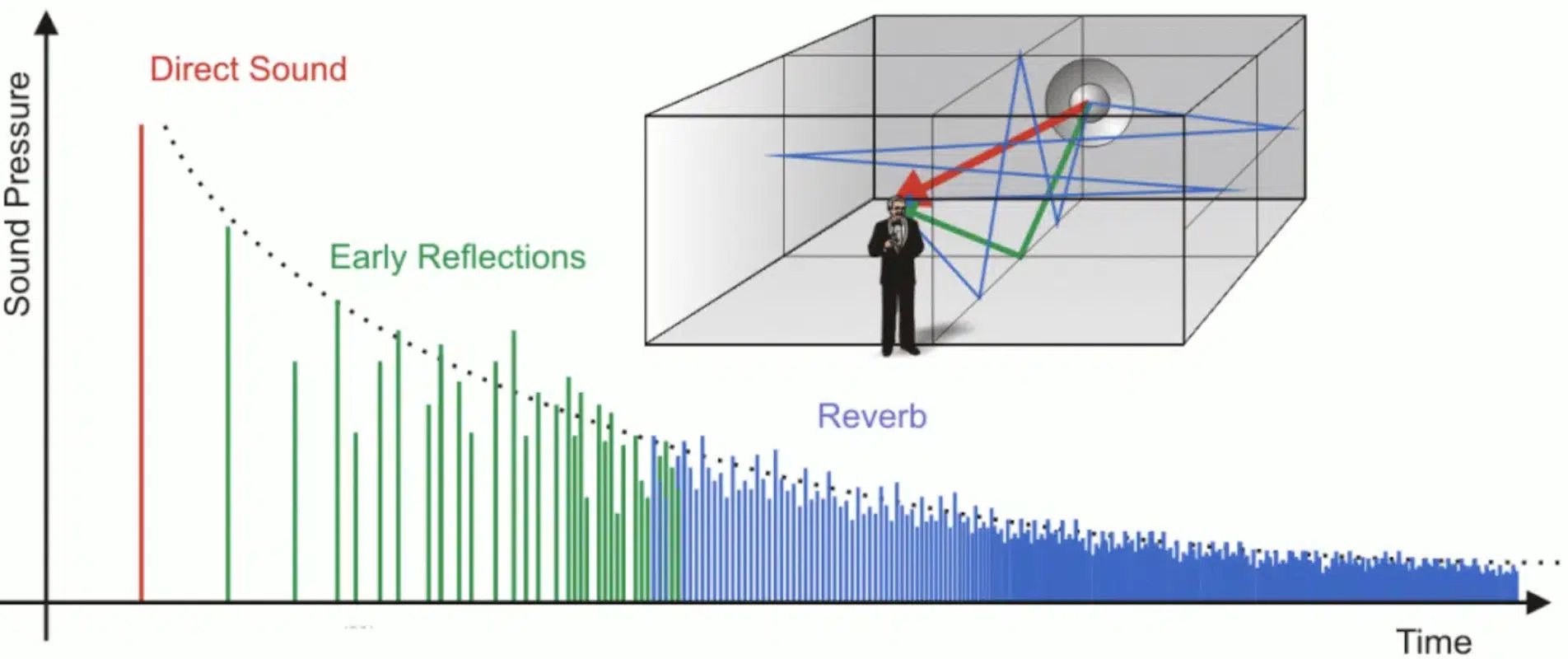
Understanding the fun interplay between short and longer sound reflections is crucial in creating unique audio effects.
- Short sound reflections 一 Can add a sense of immediacy and clarity, particularly useful in tighter echo effects.
- Longer reflections 一 Contribute to a more expansive, enveloping reverb sound.
Experimenting with the decay time of reverb and the delay time of echo can lead to intriguing results.
For instance, a short decay time with longer delay settings can create a sense of rhythm and movement, ideal for dance tracks or upbeat sections in a song.
Remember, it’s all about the sound reflecting.
NOTE: When recording music, particularly in tighter echo spaces, the technique of using fading repeats equally distant from each other enhances the track.
This is especially true when short sound reflections are a key part of the desired effect.
-
Pro Tip
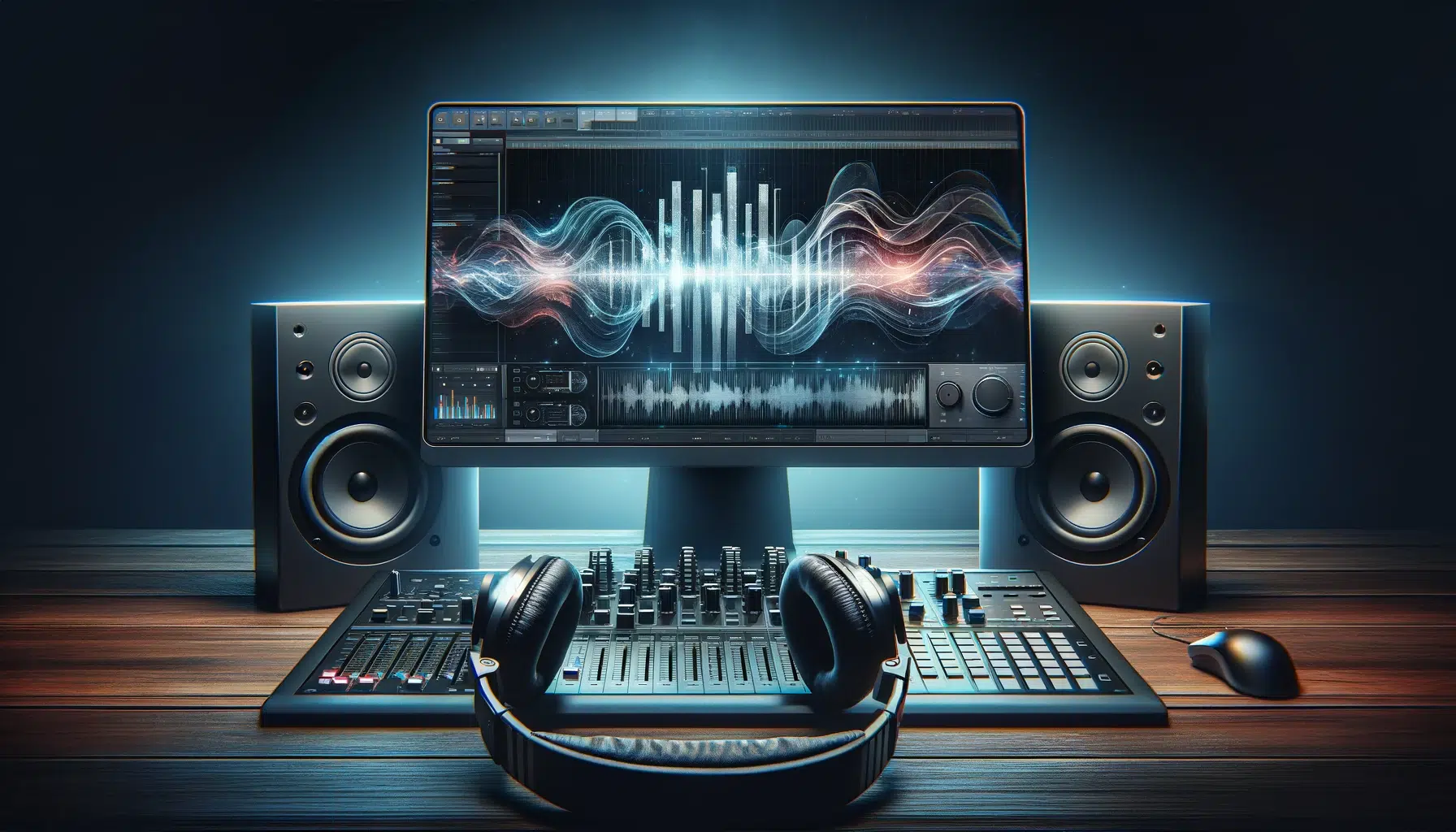
The true art of using reverb and echo lies in their ability to create unique soundscapes that define a track’s character.
By manipulating the decay of reverb and the timing of echo, any producer or sound mixer like yourself can transport listeners to different acoustic environments.
For example, adding reverb to a vocal track can make it sound like it’s being sung in a large hall.
While, on the other hand, a tight echo on a guitar riff can give the impression of a smaller, more intimate space.
It’s all about the desirable effect and what makes sense with your unique songs.
Room Acoustics & Their Impact on Echo and Reverb
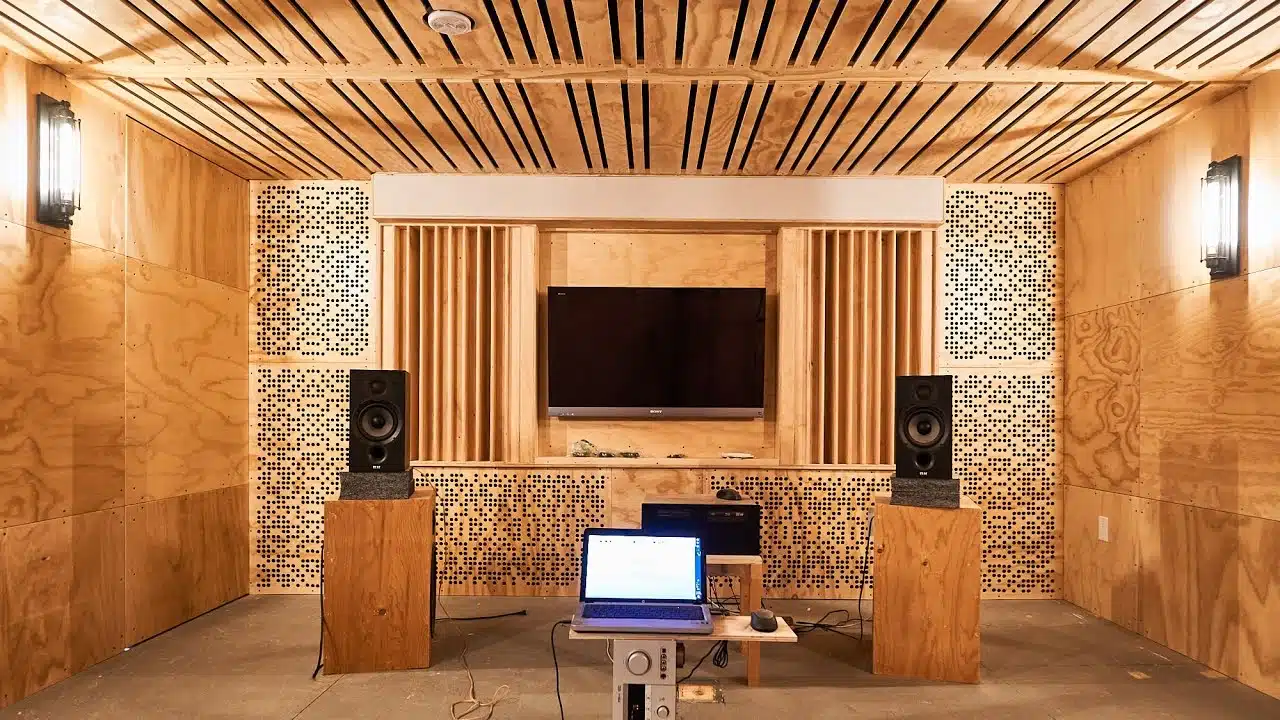
The impact of room acoustics on reverb and echo cannot be overstated.
Think about it, you hear reverb/echo in every room you step in, whether you know it or not…
For example, in a room with hard surfaces and poor acoustics, echo can become a problem, which leads to a muddled and unclear sound.
This is where treating the room with acoustic panels and sound absorption materials becomes vital for:
- Reducing unwanted reflections.
- Creating a cleaner sound for recording.
In contrast, a well-designed room can enhance the natural reverb 一 providing a foundation for adding digital reverb effects.
For instance, recording in a room with balanced acoustics and carefully placed acoustic panels allows for capturing the true essence of the instrument’s sound.
The natural reverb produced in such a space can be complemented with digital reverb to create a rich, full-bodied sound.
This synergy between physical room acoustics and digital enhancements is crucial for achieving a professional and polished final product in music production.
NOTE: Creating space in a mix is a subtle art; careful mic placement is key to capturing the way a room creates its unique character.
It allows you to hear reflections and appreciate the intriguing texture of reflected sounds.
Echo vs Reverb: Final Thoughts
Echo and reverb are two fundamental effects in the world of digital music production.
They each contribute uniquely to the sound of a recording.
While they often get lumped together, understanding the nuances between echo vs reverb, as we covered today, is crucial when you’re aiming to refine your sound.
Both deal with sound reflections, but in very different ways.
Echo, at its core, is about distinct repetition 一 when sound waves bounce off hard surfaces, they return to the listener’s ear as a separate, discernible repetition of the original sound.
Reverb, however, deals with the myriad of sound reflections that occur in a space, blending together to create a sense of room and space.
A great way to further understand the true magic of reverb and echoes in music production, these professional Free Project Files are an invaluable tool.
They contain 3 unique project files that help you see exactly how pro-quality tracks are made.
These project files are in the same styles as the biggest hit songs in modern music, so you’ll be able to see how these effects are applied across different genres.
In the end, making stand-out music comes down to pristine quality and captivating audio effects, which reverb and echoes can help you achieve.
So, go make legendary music that people just can’t get enough of; the world needs it.
Until next time…







Leave a Reply
You must belogged in to post a comment.